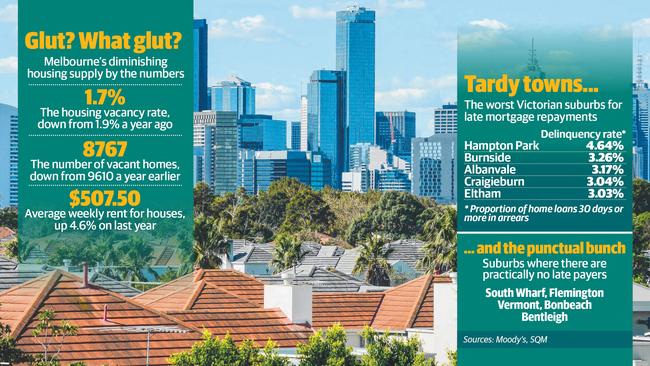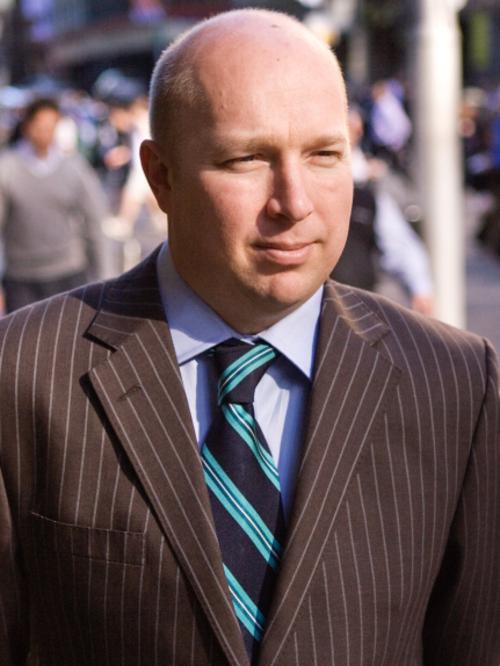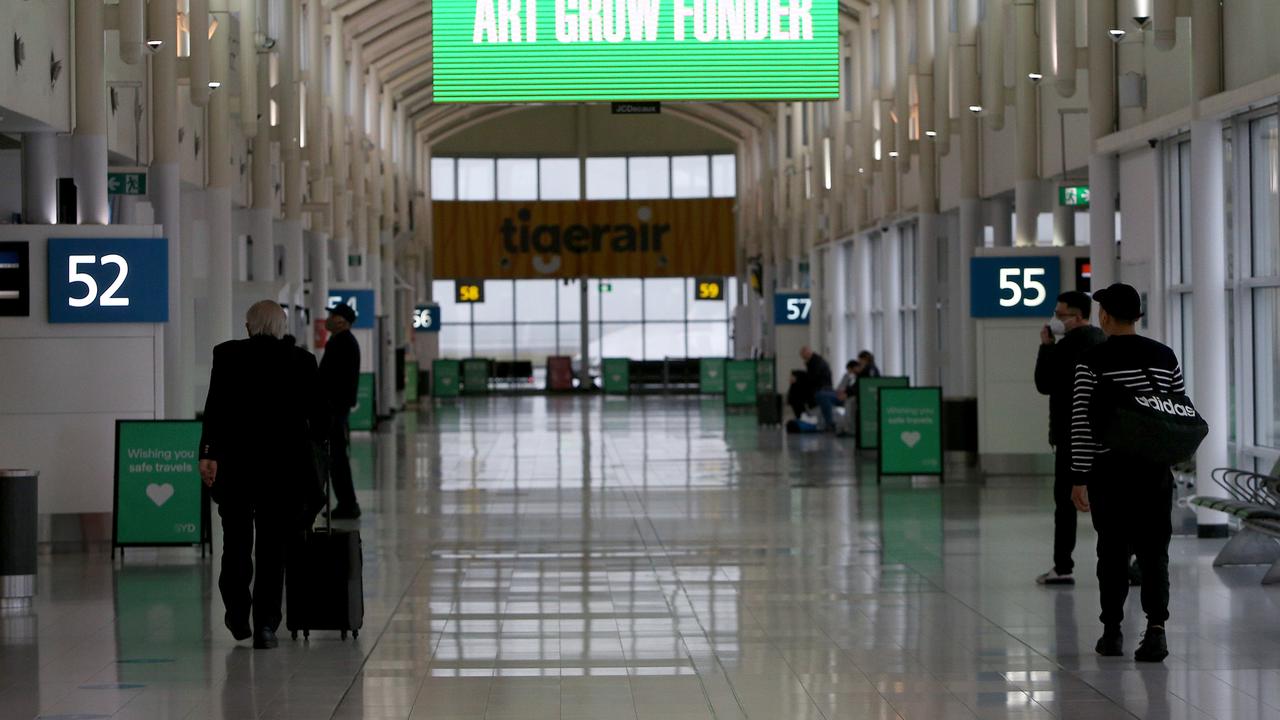Rent asunder? Housing peak edges tenants out
AUSTRALIA’s rental vacancy rate has tightened over the past month, leaving the nation at risk of a chronic shortage of lettable properties, researchers say.

Business
Don't miss out on the headlines from Business. Followed categories will be added to My News.
AUSTRALIA’S rental vacancy rate has tightened over the past month, leaving the nation at risk of a chronic shortage of lettable properties as homebuilding activity nears its peak, researchers say.
And while that might be music to the ears of landlords, the research also suggests that fears of price correction — sparked by the glut of new homes hitting the market — appear overblown.
Figures from property industry researcher SQM Research show the number of vacant homes for rent across Australia was 71,540 in August.
That means the vacancy rate was 2.2 per cent, down from 2.3 per cent a month earlier, the research house said.
The Melbourne and Sydney markets were tight at 1.7 per cent and 2 per cent, respectively, unchanged from July.
Vacancy rates contracted significantly in Brisbane, Adelaide and, in particular, Darwin.
There, it dropped 0.4 percentage points to 2.5 per cent — its seventh straight month of contraction — with just 768 properties on the rental market in August.
SQM managing director Louis Christopher said there was “nothing in our numbers to suggest the market is about to be hit with oversupply”.
“We now have mounting concerns for significant rental shortages in 2019 in Sydney and Melbourne,” Mr Christopher said. His forecast is based on projections that building completions will peak early next year, while the number of houses and flats approved for development is sliding.

Mr Christopher’s comments contrast with warnings from the Reserve Bank, which in March said it was monitoring the Melbourne and Brisbane apartment markets in particular.
The central bank said it was wary about the impact a potential glut could have on property investors who relied on rental income to meet home loan repayments.
At the time, the RBA’s assistant governor for the financial system, Michele Bullock, said: “Have households purchased these apartments on the expectation of rents and rising prices?”
“With a glut, they might not be able to rent them out and may not get the price they paid for it.”
According to SQM’s research, the average asking weekly rent during the month to September 12 was $549 for houses nationally, up 0.4 per cent on the previous 30-day period, and an unchanged $438 for units.
But landlords in Darwin, which has enjoyed a big jump in tenancy levels, have had to discount their rent to get people through the door.
There, unit rent is down 7.8 per cent on a year ago. For houses, it is down 3.8 per cent.
Melbourne rents were virtually unchanged during the month, at $507.50 for houses and $399.90 for units.
Meanwhile, Hampton Park in Melbourne’s southeast has emerged as the worst performing postcode in Victoria for households paying off a mortgage.
In May, the proportion of home loan customers nationwide who were more than 30 days behind on their repayments hit a five-year high of 1.62 per cent, according to ratings agency Moody’s Investors Service.
Hampton Park was the nation’s fourth-worst offender, at 4.64 per cent.
Among the states, Victoria boasts the third-lowest delinquency rate at 1.39 per cent, behind the ACT and New South Wales. Western Australia was the worst at 2.96 per cent.
Victoria is also home to half of the top 10 best-performing postcodes — including South Wharf, Flemington, Vermont and Bentleigh — where there were no records of loans more than 30 days in arrears.
Moody’s analyst Alena Chen said delinquencies were expected to keep rising this year due to the weakness in the economies of the mining states and slower housing markets.


